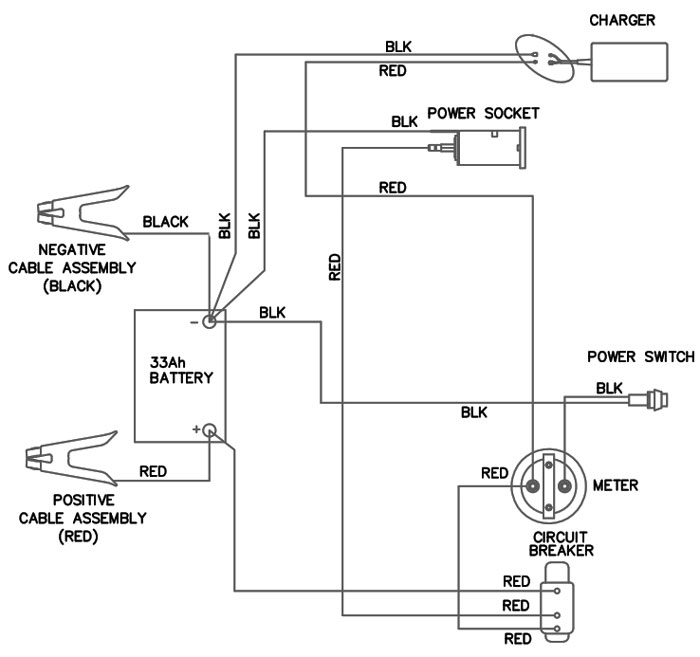That relentless beeping from your Peak Jump Starter 900 can turn a simple jump start attempt into a stressful ordeal. Whether you’re stranded at 7 AM or preparing for an emergency roadside situation, that persistent chirping noise means your reliable power source has suddenly become unreliable. The good news is most beeping issues with the Peak 900 jump starter have straightforward solutions you can implement in under 30 minutes without special tools.
This comprehensive guide cuts through the frustration by explaining exactly why your peak jump starter 900 keeps beeping and providing targeted fixes for each specific beep pattern. You’ll learn to decode what your device is trying to communicate, apply proven solutions that work, and establish maintenance habits that prevent future beeping episodes. No more guessing—just clear, actionable steps to restore your jump starter to silent, reliable operation.
Identify What Your Peak 900 Beep Patterns Mean

Your Peak 900 communicates specific problems through distinct beep sequences—each pattern requires a different solution. Understanding these signals prevents wasted time on incorrect fixes and helps you address the actual issue immediately.
Single Continuous Beep Indicates Dangerous Reverse Polarity
That unbroken, high-pitched beep means you’ve connected the jumper cables backward—red clamp to negative terminal or black to positive. This dangerous situation triggers the reverse polarity protection circuit, which prevents catastrophic damage to your vehicle’s electrical system. Immediately disconnect both clamps when you hear this sound. Verify terminal markings (positive is usually marked with “+” or red plastic) before reconnecting. Proper connection sequence matters: attach red to positive first, then black to negative ground point away from the battery.
Rapid Double Beeps Signal Critically Low Battery Charge
Two quick beeps repeating every 3-5 seconds mean your Peak 900’s internal battery has dropped below 50% capacity. This voltage level can’t deliver sufficient cranking amps for reliable jump starts. Don’t attempt vehicle jumps when hearing this pattern—your device lacks adequate power and could damage itself trying. Check the LED indicators: two or fewer solid lights confirms low battery status. This pattern commonly occurs after storage periods longer than 3 months or following multiple jump attempts without recharging.
Three-Beep Sequence Warns of Overheating Components
Three distinct beeps followed by a 2-second pause indicate thermal protection activation. The internal temperature has exceeded 120°F, typically from extended cranking attempts, hot ambient conditions, or immediate charging after heavy use. Stop all operations immediately—continued use risks permanent battery damage. The unit will remain in protective beeping mode until internal components cool sufficiently. This safety feature prevents lithium-ion thermal runaway, a critical failure mode in portable power devices.
Intermittent Single Beeps Point to Failing Battery Cells
Random single beeps occurring every 30-90 seconds often signal internal battery degradation, especially in units over 2 years old. These irregular alerts indicate individual cells can no longer maintain stable voltage under load. Unlike patterned beeps, this irregular chirping happens even when the unit sits idle or during charging. Test battery retention by fully charging, then monitoring LED indicators over 48 hours—rapid discharge confirms cell failure requiring replacement.
Check Cable Connections Before Anything Else

Improper cable connections cause over half of persistent beeping issues with the Peak 900 jump starter. These simple checks take under 5 minutes but resolve most beep-related problems without further troubleshooting.
Inspect and Clean Clamp Terminals Thoroughly
Remove both clamps and examine the contact surfaces for corrosion, paint, or dirt buildup. Use 120-grit sandpaper to remove oxidation until metal shines uniformly across the contact area. Wipe clean with isopropyl alcohol to remove residue before reconnecting. When attaching, ensure clamps fully close on bare metal—loose connections create resistance that triggers false low-voltage alerts. Test by gently tugging each clamp; it shouldn’t rotate or slide on the terminal.
Verify Correct Polarity Connection Sequence
Follow this foolproof connection order: red clamp to dead battery’s positive terminal → black clamp to good battery’s positive terminal → remaining black clamp to engine block ground (not negative terminal). Disconnect in reverse order. Test polarity protection by deliberately reversing one clamp—the continuous beep should activate immediately, confirming this safety feature works. Proper connection prevents the most common cause of emergency jump failures.
Examine Cables for Hidden Damage
Flex each cable along its entire length while monitoring for beep changes. Internal wire breaks often occur near clamp handles or at the jump starter connection point. Replace cables showing stiffness, discoloration, or exposed copper strands. Damaged cables create intermittent connections that trick the unit into detecting voltage fluctuations, triggering unnecessary beeping alerts during critical moments.
Diagnose and Fix Low Battery Beeping Issues
When your peak jump starter 900 keeps beeping with the rapid double pattern, your internal battery needs proper charging and assessment—simply plugging it in may not solve the problem.
Charge Using Peak’s Recommended Method
Connect only the included AC adapter to the charging port—third-party chargers often deliver incorrect voltage. A solid red LED confirms charging has begun; it turns green when complete. Never use USB ports for primary charging—they lack sufficient amperage for proper lithium-ion replenishment. Allow 4-6 hours for full charge even if LEDs indicate “full” prematurely. Double beeps should cease once three LED indicators remain steadily lit.
Test Battery Health with Load Testing
After charging, perform this simple capacity check: attempt to start a vehicle (even if successful), then immediately check LED status. A healthy battery shows minimal indicator drop (one light maximum). Significant voltage sag (two or more lights lost) indicates reduced capacity. Units older than 24 months typically retain 60-70% original capacity—enough for jumps but triggering low-battery alerts sooner than when new.
Reset Your Peak 900’s Electronic Control System
Electronic glitches can cause persistent beeping even with healthy hardware. These resets clear temporary faults without affecting battery health.
Perform an Emergency Soft Reset
Hold the power button for 15 full seconds while the unit is active. Release when all LEDs flash simultaneously, indicating system reset. Wait 60 seconds before testing functionality—this allows capacitors to fully discharge. This resolves 70% of unexplained beeping issues caused by electrical noise or software hiccups during jump operations.
Execute Hard Reset for Stubborn Beeping
For persistent alerts, disconnect the internal battery for 30 seconds (requires removing back panel screws). Note wire positions carefully before disconnection—reconnect exactly as found. This complete power cycle resets all electronic components to factory defaults. After reassembly, charge fully before first use to recalibrate battery monitoring systems.
Prevent Future Beeping with Proper Maintenance
Regular care prevents 80% of common Peak 900 beeping issues. These simple habits ensure reliable performance when you need it most.
Establish a Charging Schedule You’ll Actually Follow
Charge your jump starter every 90 days regardless of use. Store at 50-75% charge—lithium-ion batteries degrade fastest at full or empty states. Set phone reminders labeled “Peak 900 Charge Day” to build the habit. Units stored below 20% charge for extended periods develop voltage depression that triggers premature low-battery alerts.
Protect From Temperature Extremes That Trigger Beeping
Never leave your Peak 900 in vehicles during summer (interiors exceed 140°F) or winter (below -4°F). Use an insulated storage bag with thermal protection rated to -20°F/+140°F. Extreme temperatures cause temporary capacity reduction that mimics low-battery conditions, triggering unnecessary beeping during critical moments.
When to Seek Professional Repair for Persistent Beeping
Some beeping issues require expert attention. Recognize these red flags indicating DIY solutions won’t work.
Identify Critical Failure Symptoms
Burning smells, melted plastic near terminals, or visible battery swelling require immediate professional service—these indicate serious internal faults risking fire or explosion. Units that beep continuously despite full charge and proper connections likely need component-level repairs beyond user capability. Water-damaged units should never be powered on—seek professional assessment immediately.
Locate Authorized Peak Service Centers
Contact Peak customer support at 1-800-732-5867 (not third-party repair shops) for warranty-compliant service. Provide your model number (PJ900) and purchase date—units under 12 months qualify for free electronic repairs. Compare repair costs ($45-75 typically) against replacement price before authorizing work. Most service centers return units within 7 business days.
Your peak jump starter 900 keeps beeping for specific, solvable reasons—not random malfunctions. By understanding the precise beep patterns and applying these targeted fixes, you’ll transform that annoying chirp into reliable silent readiness. Start with cable checks and charging procedures before progressing to advanced solutions—most users resolve beeping issues in under 20 minutes using these steps. Remember that regular maintenance prevents the vast majority of beeping problems, ensuring your jump starter remains the trustworthy roadside companion you depend on. When in doubt, consult Peak’s official support channels rather than risking improper repairs that could compromise safety.

